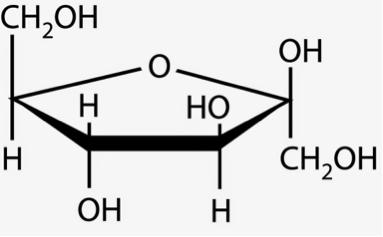
Fructose is also known as fruit sugar and is a simple ketonic monosaccharide found in many plants. Fructose is believed to bind with glucose to form the disaccharide sucrose, which is the sugar formed when two monosaccharides (so called simple sugars) are joined together. Fructose is discovered by Augustin-Pierre Dubrunfaut, who is a French chemist in 1847 for the first time. However, an English chemist named William Miller coined the name of Fructose in 1857. Pure, dry Fructose is a very sweet, white, odorless, crystalline solid and is soluble in water likes all the sugars. Fructose can be found in honey, fruits and all most of root vegetables.
Scientists at Creative Proteomics utilize a highly quantitative method with high-performance liquid chromatography (HPLC) for the determination of Fructose levels in various samples, including Food, Beverage and more. High-Performance Liquid Chromatography (HPLC) using a differential refractive index detector (RID) for the determination of Fructose levels in a lot of biological samples. This Methodology provides accurate, reliable, and reproducible results of Fructose measurement, which enables us to analyze of Fructose levels in vitro and in vivo.
Fructose along with glucose and galactose are the three dietary monosaccharides and can be absorbed by human beings directly into the bloodstream during digestion. The catabolism of Fructose is referred to as fructolysis in general, in analogy with glycolysis, which is the metabolic pathway that converts glucose into pyruvate and is the catabolism of glucose. In the biochemical process of fructolysis, Fructose 1-phosphate is produced under the catalytic activity of the the enzyme named fructokinase, and then the trioses dihydroxyacetone phosphate (DHAP) and glyceraldehydes is produced by the split of the aldolase B.
The Russian-Polish botanist M. Tswett is generally recognized as the first person to establish the principles of chromatography. In a paper he presented in 1906, Tswett described how he filled a glass tube with chalk powder (CaCO3) and, by allowing an ether solution of chlorophyll to flow through the chalk, separated the chlorophyll into layers of different colors. He called this technique “chromatography”. Fundamentally, chromatography is a technique used to separate the components contained in a sample. High Performance Liquid Chromatography (HPLC) is a method able to separate non-volatile, thermally unstable, and polar components separate or in a mixture. HPLC is a type of chromatography that, because of its wide application range and quantitative accuracy, is regarded as an indispensable analytical technique, particularly in the field of organic chemistry. It is also widely used as a preparation technique for the isolation and purification of target components contained in mixtures.
Fructose Analysis Service at Creative Proteomics supports your research in Fructose Analysis. HPLC Based Analysis Service Platform enable us at Creative Proteomics offers you a state-of-the-art Analysis Service.
Sample Type
Food, Beverage and more
Method
High-Performance Liquid Chromatography (HPLC) using a differential refractive index detector (RID) for the determination of Fructose levels in a lot of biological samples. This Methodology provides accurate, reliable, and reproducible results of Fructose measurement, which enables us to analyze of Fructose levels in vitro and in vivo.
Send us your samples, you will get all information that you need!